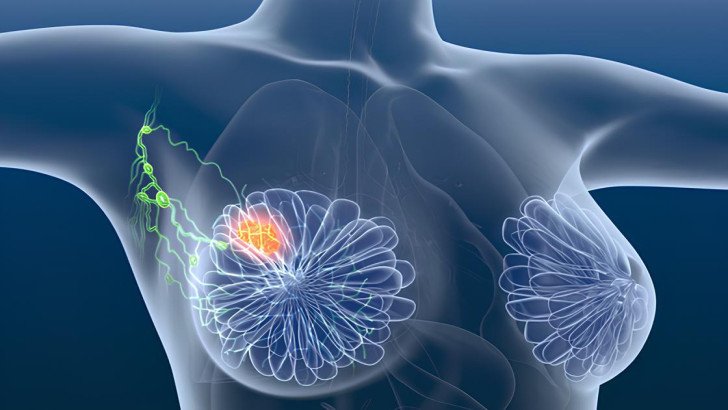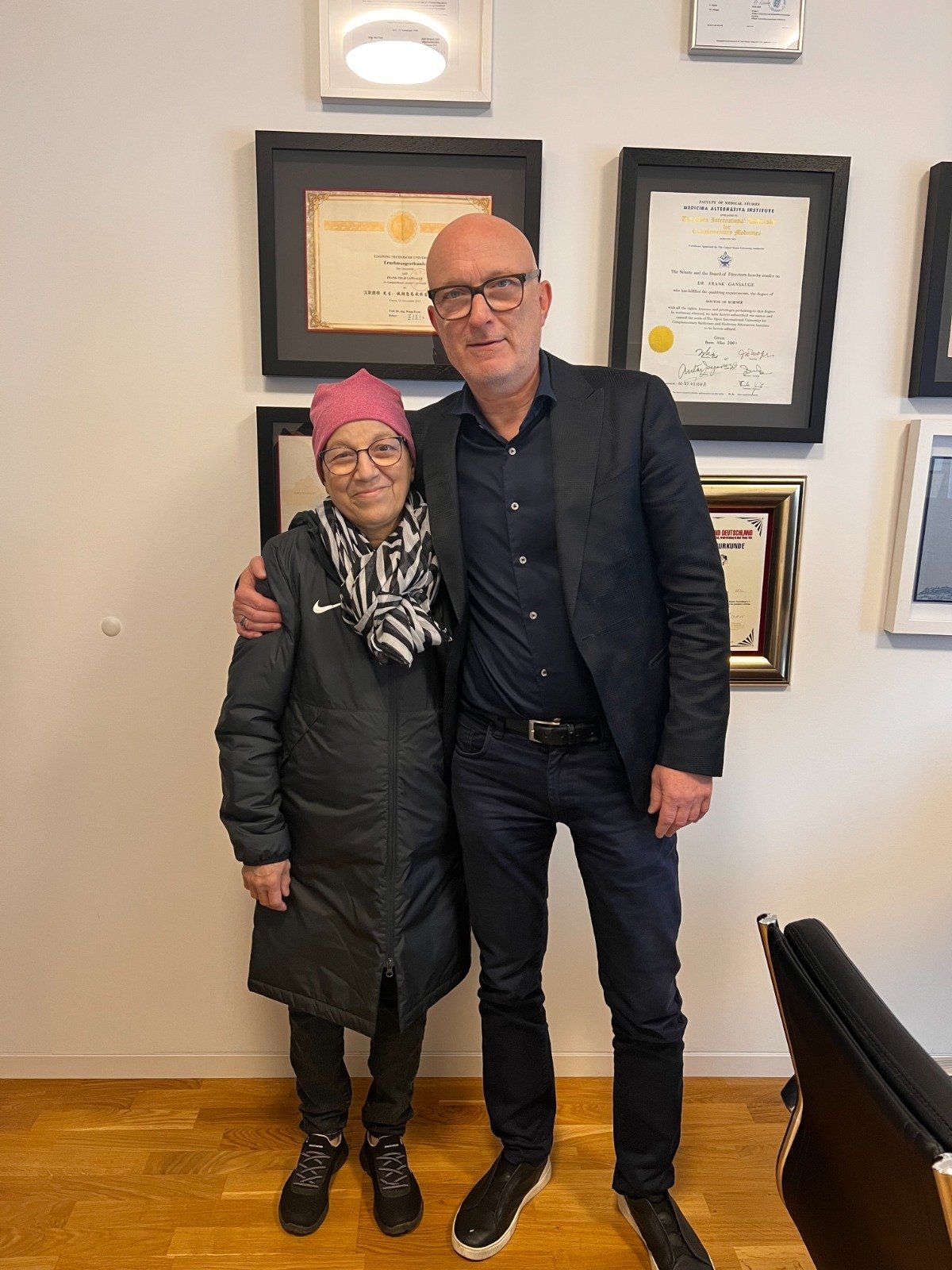
Radiation therapy is a critical component in the management of breast cancer. This treatment uses high-energy radiation to target and destroy cancer cells, often complementing surgery or chemotherapy
Radiation
therapy for Breast Cancer
Radiation
therapy is a critical component in the management of breast cancer. This
treatment uses high-energy radiation to target and destroy cancer cells, often
complementing surgery or chemotherapy
What is Breast
Cancer?
Breast cancer
is a common disease that affects people who are born with a female gender
assignment (AFAB). Tumors are formed when abnormal cells in the breast grow out
of control. Since tumors can move from the breast to other regions of the body,
around 80% of cases of breast cancer are invasive.
What causes breast cancer?
Breast cells
can transform into cancerous cells that expand and multiply to form tumors,
which is how experts know breast cancer occurs. They do not know what causes
this change. On the other hand, evidence from studies indicates that several
risk factors might raise your risk of breast cancer. Among them are:
55 yars of age
or older
Sex: Compared
to males and AMAB, women and those AFAB have a significantly higher chance of
developing this disease.
Family history: You
are more likely to have breast cancer if any of your parents, siblings,
children, or other close relatives already have the disease.
Genetics: Inherited
genetic alterations are responsible for up to 15% of cases of breast cancer.
he BRCA1 and
BRCA2 genes are the most often mutated genes.
Smoking: The
use of tobacco products has been connected to a wide range of cancers,
including breast cancer.
Drinking
alcohol-containing drinks: Studies suggest that consuming
alcohol-containing beverages may raise the risk of breast cancer.
Being
overweight.
Radiation
exposure: You have an increased risk of developing breast cancer if you
have ever had radiation therapy, particularly to the head, neck, or chest.
Hormone
replacement therapy: Individuals who use hormone replacement therapy (HRT)
are more likely to receive a diagnosis of the illness.
What is
radiation therapy for breast cancer?
High-powered
X-rays are used in radiation therapy for breast cancer to destroy or harm
cancerous cells in the breast. To remove tumors, breast surgeons and surgical
oncologists specialists in cancer frequently perform breast cancer surgery. To
kill any remaining cancerous cells, radiation treatment is then managed by
radiation oncologists. This therapy may be used to relieve symptoms of breast
cancer or symptoms from other parts of the body in people with metastatic
breast cancer.
Types of
radiation therapy for breast cancer
Radiationtreatment can be performed in a variety of
methods. Your radiation oncologist will select the most effective technique
based on the kind, location, and other aspects of cancer.
External beam radiation therapy (EBRT) involves the application of
high-energy radiation beams to your breast using a device known as a linear
accelerator. For one to six weeks, the majority of patients receive this
therapy five days a week. Intensity-modulated radiation treatment (IMRT) and
stereotactic body radiation therapy (SBRT) are two types of EBRT.
Brachytherapy An
internal radiation therapy that is performed by inserting a small radioactive
seed into the tumor location by a radiation oncologist using a catheter. The
seed emits radiation for a few minutes until your provider takes it out. For
five days, you receive two treatments each day.
Intraoperative
radiation therapy (IORT): This is a procedure your surgeon does in the
operating room following the removal of the breast tumor but before the
surgical incision is closed. They expose the exposed breast tissue to a high
dosage of radiation in the tumor location.
What are the
treatment side effects?
Radiation
therapy usually has no side effects right away, although there might be
consequences in the long run Possible short-term adverse effects include:
Fatigue: Most
patients have minor weariness during therapy, which subsides a few weeks
following the end of the course of medication.
Skin
irritation: You may notice some skin flakes and feel like your skin is
extremely dry. Your skin can peel. Some people get moist desquamation, a skin
ailment that usually affects the folds that are found between the breast and
the arm or under the breast. You might have blisters and peeling skin.
Color changes: Fair-skinned
people may have skin that seems sunburned. You could notice that your skin
seems darker than normal if you have dark skin.
Breast
discomfort: Some people experience either a slow aching sensation or a
sudden, stabbing pain. Usually, the discomfort comes and goes. You can have
aching breasts or nipples.
Possible
long-term negative effects include:
Telangiectasias,
or spider veins: These are common and not cause for concern.
reast size
change: Your breasts may get bigger or smaller.
Lymphedema:
Swelling that affects the arm on the side where the breast cancer is located
occurs in certain individuals who receive radiation therapy to the lymph node locations
for breast cancer.
Fatigue that
doesn't go away: Some patients experience noticeable weariness weeks or months
after finishing their therapy
Radiation
treatment seldom causes hair loss from the head, unlike other types of
chemotherapy; nonetheless, it can cause armpit hair loss.
What are the
risks or complications of this treatment?
Chest pain is
one of the rare side effects of radiation treatment for breast cancer.
Possible issues consist of:
Broken
ribs Heart valve problems, arrhythmias, and atherosclerosis—a hardening of
the arteries—are all examples of radiation-induced heart disease or
cardiotoxicity.
Fibrosis of the
lungs.
rachial
Plexopathy: a shoulder and arm nerve injury Angiosarcomas are newly
emerging tumors that form in the blood and lymphatic vessel walls.
Symptoms
Indicating the Need for Radiation Therapy
Signs of Breast
Cancer
Lump in the
Breast: A noticeable, often hard mass that may be painless.
Changes in
Breast Shape or Size: Alterations in appearance or texture.
Nipple
Discharge: Unusual discharge, particularly if it is bloody or clear.
Symptoms During
and After Radiation Therapy
Skin Irritation:
Redness, tenderness, or peeling in the treated area.
Fatigue: A
common side effect due to the body's response to radiation.
Swelling: In the
breast or chest area, often temporary.
In Conclusion, for both early-stage and more advanced breast cancer, radiation therapy is a popular and successful treatment. Additionally, it could lessen the signs of metastatic breast cancer. Research indicates that this therapy prevents the recurrence of breast cancer. Both short-term and long-term negative effects are possible with this medication
Kindly complete the form below, and our dedicated team will reach out to you promptly. We look forward to connecting with you soon!
Trierer Straße, 56072 Koblenz, Germany
.webp)
.webp)
 (1).webp)
 (1).webp)

.webp)
.webp)
 (1).webp)
 (1).webp)
